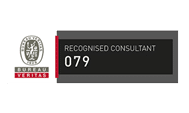Let’s be honest—who really likes ISO?
The sad truth is that we do. But you probably don’t.
You likely appreciate the benefits that ISO management systems bring—efficiency, compliance, and credibility. You might even believe in the principles of ISO 9001, ISO 14001, or ISO 45001. But when it comes to actually working with these systems? That’s where frustration sets in. You wouldn’t be alone in feeling that way. Most ISO systems are overly complicated, ineffective, and feel like an administrative burden rather than a tool for success.
Introducing EmmersonWills
At EmmersonWills, we don’t just understand ISO—we simplify it. Known as the ISO Simplification Experts, our ISO consultancy is built on the belief that ISO management systems should work for you, not against you. That’s why we focus on cutting through unnecessary complexity, designing streamlined systems that deliver results without the headache. Simplify your ISO, empower your success.
Why Choose Us?
Experienced.
Our team has extensive hands-on experience in ISO consultancy, covering ISO 9001, ISO 14001, and ISO 45001. We’ve worked with businesses across industries, helping them achieve and maintain certifications with minimal disruption.
Focused.
We don’t believe in generic, one-size-fits-all systems. Instead, we take the time to understand your business, ensuring that your ISO management system is relevant, practical, and—most importantly—usable.
Bespoke.
Every organisation is different, and your ISO system should reflect that. Whether you need an ISO 9001 consultant to refine your quality management system, ISO 14001 consultants to enhance your environmental management, or ISO 45001 consultants to ensure workplace safety compliance, we tailor solutions to fit your needs.
Changing the Way You Think About ISO
We’ve seen it happen time and again—companies that once viewed ISO certification as an unavoidable hassle now embrace it as a valuable business tool. Why? Because when the system is simplified, it actually works. No unnecessary procedures, no redundant paperwork, just a structured, efficient approach to compliance and improvement.
Don’t just take our word for it—our clients say it best:
“EmmersonWills provides a great ISO system that’s easy to understand and implement.”
“The process initially looked daunting, but EmmersonWills took all the pressure and made us comfortable with their knowledge and experience.”
“EmmersonWills took all the stress out of ISO 9001 with their flawless system and 24/7 support. I can’t recommend them enough.”
Take the Next Step
If you’re tired of wrestling with an overcomplicated ISO management system, we’re here to help.
Simplify your ISO, empower your success.
Get in touch with our expert ISO consultants today and take control of your ISO journey—without the stress.
Email us at [email protected] or call us free on 0800 433 2207.





















